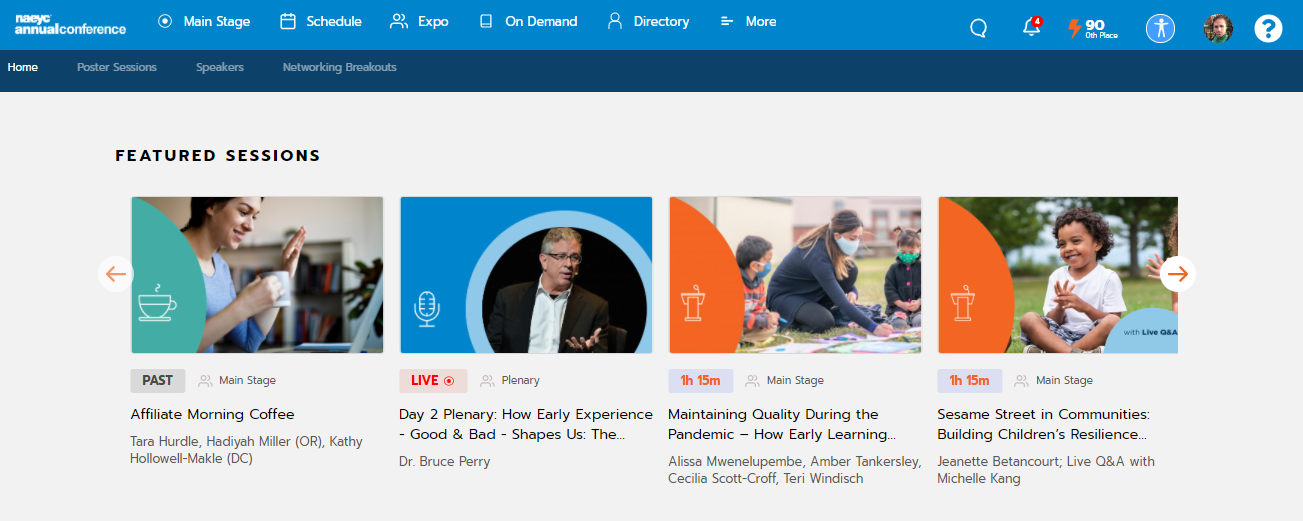NAEYC Conference Running Diary Day 2
I plan to keep taking some notes of the events I attend at this year’s NAEYC Conference. The title of each session I attended each day will be in bold while the bullet point notes I took during the session will be underneath. This is day 2’s notes.
How Early Experiences, Good and Bad shape us: The Power of The Relational Moment with Dr. Bruce Perry
The human brain has the capacity for social-cultural evaluation where in one life time you can learn from 1000s of generations of humans before you
The human brain has the highest amount of malleability early in life and is able to adapt the the languages, environment, culture, and experiences it is exposed
Unfortunately, society spends and supports early childhood less than later in life even though all the research shows its the most important time in human development
Our brain is very similar to other animals but The Human Cortex is the most unique part of the human brain.
The brain gets constant amount of information from both outside and inside the body. Our core regulatory neural networks that are located in the lower parts of the brain directly communicate with all parts of the brain from the upper cortex to the lower brain stem and also communicate with our other systems like nervous system and immune system.
Our interactions with young children help build these regulatory networks and the networks are essential for every developmental process
When have positive early childhood experiences, it allows a child to blossom and develop. However, if a child has adverse experiences intrauterine insults, bonding and attachment issues, unpredictable experiences and abuse, and having to too with constant stressors from things like neglect, poverty, racism, it will negatively impact the core regulatory networks which hurts all other aspects of development.
Present attuned and responsive caregivers build resilience in young children and support brain development. Children who don’t have that can become a “sensitized child” who are more likely to be overwhelmed by minor stressors. This can negatively impact all other aspects of child development.
While we think human behavior is driven top down from the cortex, it is actually driven bottom up by our base systems. As we get older, and our cortex is allowed to develop properly, our behavior becomes more top down and governed by the cortex. But, if young children have too many adverse experiences it can negatively impact the development of the cortex so it's harder for them to get to the point where their behavior can be regulated by the cortex.
The best way to positively develop the cortex is through quality personal relationships
Neurosequential Model Core Slides Deck https://8888cf92-fc69-4812-b8a8-1049afbcc7cf.filesusr.com/ugd/5cebf2_6b9a260d654f4e3dbf0118dcbd971742.pdf
Maintaining Quality During the Pandemic – How Early Learning Leaders Found a Way to Survive and Thrive
Biggest challenges during the pandemic were concerns about transmission of covid both in programs and potentially staff catching it and passing it on to love ones, finding solid accurate information, knowing what information you can trust especially as guidance changed,
Some programs adapted by doing some things for children who were staying at home online.
For children who were still in the programs, adjustments included doing drop off outside, having individualized buckets of crayons/toys/materials for children, individual snack instead of family style, family teacher conferences through zoom or google voice, as well as one on one open house format instead of big group open house for families to meet teachers and see classrooms.
For teachers a big change that they lost communal spaces for lunch, staff meetings, and break rooms. Adjustments to that were having staff meetings in small groups in larger rooms to socially distance, using online tools for communication, and surveying teachers about their needs and concerns. A big concern was just trying to find a space for teachers to safely eat lunch.
Programs revamped their webpage and parent handbook to better communicate with families. Some programs also used other tools like Facebook, Twitter, and Instagram to better communicate and get information out to families.
For budgets, programs reallocated funds to meet the challenges of the pandemic especially when it came to finding PPE which was scarce during the pandemic.
Staff had to practice self care regiments and or learn self care regiments in order to get by. Moreover, center leaders had to promote the idea of self care and really try to check in and build relationships with staff about how to support and care for themselves. Center Directors modeling self care for staff was also important.Center directors also had to make time for individual staff to make sure they were doing ok and not just larger meetings.
Federal Update: Advancing and Investing in Early Childhood Education Across States, Settings, and Departments with Katie Hamm and Miriam Calderon
A main priority initially was to stabilize the field with the American Rescue Act funding to deal with all the challenges rot by the pandemic along with funds to help with with health and safety issues.
States are allowed to put in conditions on funds like part of the money that goes to programs should be used for staff wages, recruitment bonuses, health insurance, shared services models, and wellness supports like mental health services. Overall, states are being encouraged to deploy any federal funds they have already received as quickly as possible.
The main goal of the Build Back Better plan related to early childcare would be to provide free child care for low income families and capping cost at 7 percent of total income for other families, universal Preschool in a mixed delivery system where parents can choose the type of program including FCC, GCC, Head Start, and Public schools. In addition, funds would go to providers to get better compensation and increase the reimbursements rates.
Educator voices and activism were crucial to get past federal funds passed and will be crucial to getting future funding from congress.
Public Service Loan Forgiveness program is available to many early educators and the federal government is trying to make the process easier
Legislatures at every level as well as people in the public school system need more education to understand how the mixed delivery system works and how public funds can flow to those groups.
*Screen shot from NAEYC Conference website




